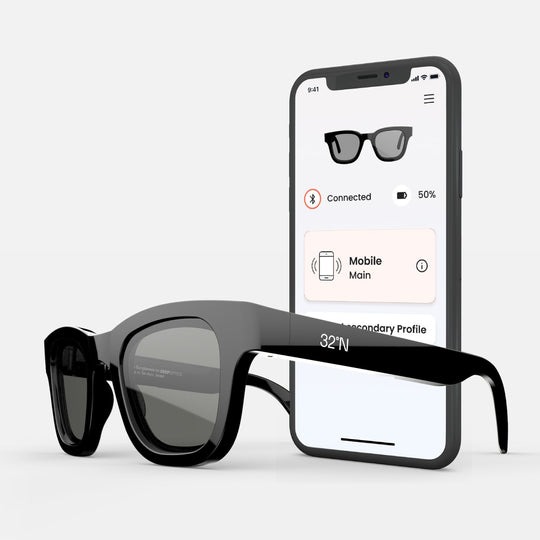32 Degrees North Are The Smartest Glasses On the Market. Don’t Buy Them
They’re fun, but too complicated, too expensive, and unnecessary.

RayBan and Meta’s collaborative smart glasses rank among the top tech products available. In my first piece for The New York Sun, I praised their previous generation, and the latest version is only a further improvement. Though they resemble standard Ray-Ban Wayfarers, these glasses feature cameras, speakers, and an AI assistant, so make listening to music, taking photos, and learning information a hands-free experience.
Smart glasses will continue to advance and gain popularity in the coming years, and Deep Optics aims to be a frontrunner with their new 32 Degrees North Muir and Wharton glasses.
These are not smart glasses like those from Meta, Snapchat, and Bose — adding smartphone functionality to eyewear. Rather, Deep Optics has used the latest tech to upgrade the core function of glasses.


Namely, these glasses use patented liquid crystal lenses, controlled through a paired app, and on-device gestures. With a swipe on the arm, they tint for outdoor use. Step back indoors, and with another swipe, they’re reading glasses. The technology is somewhat similar to electrochromic glass found in luxury car sunroofs, but denser and more adjustable. Beyond tint, these are the first reading glasses that allow in-app adjustment of the focal distance, to minutely tweak them to suit your particular sight.
This is all very interesting, but it’s a feature to come in future sunglasses, not the premise of a discrete product, and this tech is too nascent to recommend.
To start with a basic example; the need to charge the Meta RayBans is fine, because I’m usually finished with them when I step indoors, and this minor inconvenience puts cameras, audio, and an AI assistant right by my eyes, to be used without ever touching my phone.
By contrast, the whole point of the 32 Degrees North is that you wear them almost all the time — as both your sunglasses and your reading glasses — so charging them is a lot less convenient. And what do you get for this? That you can have one pair of glasses instead of needing both a pair of reading glasses and a pair of sunglasses — which isn’t actually that bothersome, particularly if you like a variety of styles. More frustrating, they don’t support prescription lenses, are entirely made entirely of plastic, and cost $849.
Yes; $849.
That makes sense for the manufacturers, given how costly these lenses will be, but is nonsensical for the end consumer. By contrast, a pair of polarised Meta RayBan smart glasses, available in a wide range of styles, equipped with cameras, speakers, and an AI assistant, costs $329. For $379, they sell pairs with light-responsive lenses, which go from clear to dark as soon as you step into the sunlight — without the cost and complexity of the 32 Degrees North pair.
Or if you don’t want all that tech, a pair of classic Persol 714s in black — the sunglasses Steve McQueen wore — cost $447, and you can add a pair of their PO3007V reading glasses — available with prescription lenses — for another $237.
No, they’re aren’t smart glasses, and yes, you therefore have to carry a second pair of glasses. But you save $165, for better build quality, classic design, and no need to recharge them.

